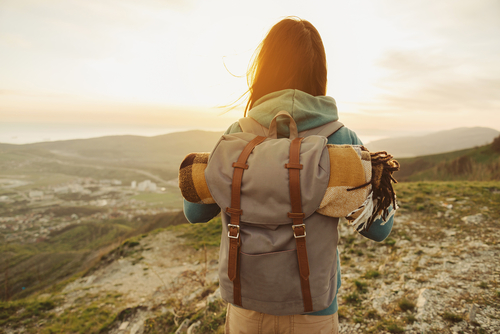
The Marvels of Hiking
Hiking is a fun, relaxing way to experience the great outdoors with friends and family. When you go on a hike, you get to explore places in nature that the roads cannot reach. Leave your worries about time, work and other stressors far behind and reawaken your sense of wonder. There is nothing like reconnecting with friends or loved ones on a journey through nature.
If you’ve never hiked before, you might feel intimidated by the idea. Maybe you’re concerned you’re not in shape to hike. Perhaps you’re worried you’ll get lost and won’t be able to find your way back. Rest assured — there is a hike out there for everyone. Hiking is not a race to the finish line, but a low-impact workout that is about enjoying good company and immersing yourself in the beauty of nature.
Hiking offers many health benefits, too, including help with weight management and stress reduction. Physical activity also decreases the risk of heart disease, hypertension and diabetes. If you are ready to start hiking, you are making an excellent choice for your overall well-being. Plus, getting started is easier than you might think.
In this guide, you will find everything you need to start hiking, from packing essentials to how to prepare for a day hike. With a little planning, you can enjoy a safe, comfortable and pleasurable hike.
Most of the outdoor survival events that occur can be prevented with a little preparation and planning. A survival situation is something that can happen to anyone, regardless of his or her experience or expertise in hiking. Survival situations don’t always arise because someone is inexperienced or reckless. If you want to have the best time you can on your hiking vacation, while keeping yourself and your family as safe as possible, there certain steps you can take.
First and most important, be sure to leave a travel plan with someone at home. A travel plan lists the possible locations you expect to cover while on your hiking vacation. It does not have to be a detailed list. You can use a map and just mark the spots on it where you plan to be. If you leave a travel plan, then searchers will have an idea of where to look for you if you become lost.
Second, always carry a few basic items with you in case you must spend the night on the trail. Take a garbage bag, a lighter, a whistle, a pocketknife, and a water bottle. This is the minimum number of essential items you should bring with you whether you are hiking for a day or for a week or longer. These items address the basic needs from shelter to water and heat. Depending on your outdoor activity, level of skill, and the climate you plan to hike in, you may need to carry more extensive equipment.
Third, be sure to pack something you can turn into a shelter quickly. A garbage bag is an example of such an item. It can be easily made into a shelter. Just cut a slit in the middle of the closed end and pull it over your head. This is a great solution to the problem, and a bag is easy to pack in a pocket. It only costs a few pennies, and it may save your life.
Hypothermia can occur even in 50-degree weather, so it is critical that you have a way to make a quick shelter should the need arise.
Always carry a wool cap in your vehicle and your daypack. Eighty percent of your body heat leaves you if your head is exposed. You must always protect your head when you are hiking. If you don’t have a cap, use a sock or a bandanna. You can wear anything on your head if it keeps your head warm.
Finally, make a habit of carrying at least three fire-making resources with you. Having a lighter is always a good idea but having only one source of fire making while hiking is inadequate. Lighters may get wet, and then they won’t light anymore. Also carry a spark rod and windproof matches in your pocket or pack. You are like to make a fire in rainy or otherwise bad weather. While this can be tricky, it can be done. Just collect dead twigs from evergreens like pines, firs, or spruces. These trees have a lot of resin so they will catch fire faster than other types of wood.
OTHER HIKING TIPS AND TRICKS
A beginner’s hiking trail mostly requires comfortable shoes, water, adequate snacks and a hiking buddy. However, here are a few final tips to keep in mind:
Let someone know of your hiking plans
Only take what’s necessary for a safe, enjoyable hike to avoid carrying too much weight
Always bring enough water
Choose a trail you can handle and give yourself time to build up to more difficult levels
Hike with a companion
Bring your cell phone in case of an emergency, but turn it off when you are not using it to conserve battery
Always stay on the designated trail
Stretch your body for five minutes before a hike
Most importantly, set your worries aside and plan to have fun, relax and enjoy the great outdoors. Remember, you can take your time and explore at your own pace — when you’re in nature, there is no hurry. Instead, it’s a time to reconnect with friends, family and the beauty of nature.


